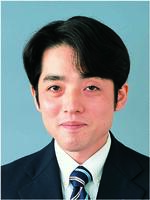経歴
-
2018年04月-継続中
早稲田大学 理工学術院 先進理工学部 生命医科学科 教授
-
2014年-継続中
東京女子医科大学 大学院看護学研究科 非常勤講師
-
2004年-継続中
東京女子医科大学 先端生命医科学研究所 非常勤講師
-
2020年04月-2023年03月
東京医科歯科大学 生体材料工学研究所 非常勤講師
-
2007年-2018年
早稲田大学 理工学術院 先進理工学部 生命医科学科 准教授
-
2009年-2016年
山梨大学 大学院医学工学総合教育部 非常勤講師
-
2014年-2015年
東京医科歯科大学 生体材料工学研究所 非常勤講師
-
2005年-2007年
早稲田大学 先端科学・健康医療融合研究機構 生命医療工学インスティテュート 助教授
-
2004年-2005年
早稲田大学 先端科学・健康医療融合研究機構 生命医療工学研究所 講師
-
2001年-2004年
東京女子医科大学 脳神経外科 (兼) 助手
-
2001年-2004年
東京女子医科大学 先端生命医科学研究所 助手
-
1998年-2001年
日本学術振興会 特別研究員(PD)
-
1995年-1998年
日本学術振興会 特別研究員(DC1)


Click to view the Scopus page. The data was downloaded from Scopus API in January 07, 2026, via http://api.elsevier.com and http://www.scopus.com .